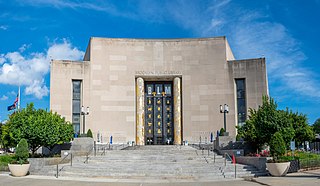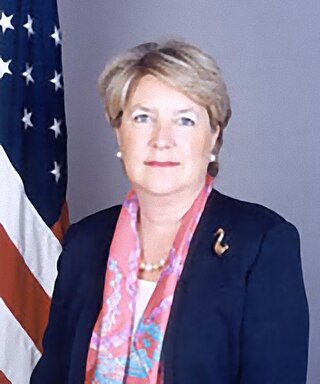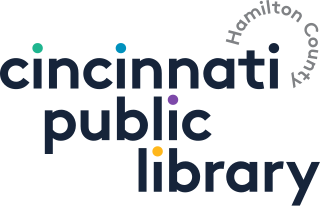
Montgomery is the capital city of the U.S. state of Alabama and the county seat of Montgomery County. Named for Continental Army Major General Richard Montgomery, it stands beside the Alabama River, on the coastal Plain of the Gulf of Mexico. The population was 200,603 at the 2020 census. It is the third-most populous city in the state after Huntsville and Birmingham, and is the 133rd most populous in the United States. The Montgomery Metropolitan Statistical Area's population in 2022 was 385,460; it is the fourth largest in the state and 142nd among United States metropolitan areas.

Birmingham is a city in the north central region of Alabama, United States. Birmingham is the county seat of Jefferson County, Alabama's most populous county. As of the 2023 census estimates, Birmingham had a population of 196,910 down 2% from the 2020 census, making it Alabama's second-most populous city after Huntsville. The broader Birmingham metropolitan area had a 2020 population of 1,115,289, and is the largest metropolitan area in Alabama as well as the 47th-most populous in the US. Birmingham serves as an important regional hub and is associated with the Deep South, Piedmont, and Appalachian regions of the nation.

Opelika is a city in and the county seat of Lee County in the east-central part of the U.S. state of Alabama. It is a principal city of the Auburn-Opelika Metropolitan Area. As of the 2020 census, the population of Opelika is 30,995, an increase of 17.1 percent from the 2010 Census where the population was 26,477. The Auburn-Opelika, AL MSA with a population of 150,933, along with the Columbus, Georgia metropolitan area, comprises the Greater Columbus combined statistical area, a region home to 501,649 residents.

Huntsville is the most populous city in the U.S. state of Alabama and 95th most populous in the US. It is the county seat of Madison County with portions extending into Limestone County and Morgan County. It is located in the Appalachian region of northern Alabama, south of the state of Tennessee.

Livingston is a city in and the county seat of Sumter County, Alabama, United States and the home of the University of West Alabama. By an act of the state legislature, it was incorporated on January 10, 1835. At the 2010 census the population was 3,485, up from 3,297 in 2000. It was named in honor of Edward Livingston, of the Livingston family of New York.

The Enoch Pratt Free Library is the free public library system of Baltimore, Maryland. Its Central Library is located on 400 Cathedral Street (southbound) and occupies the northeastern three quarters of a city block bounded by West Franklin Street to the north, Cathedral Street to the east, West Mulberry Street to the south, and Park Avenue (northbound) to the west. Located on historic Cathedral Hill, north of downtown, the library is also in the Mount Vernon-Belvedere-Mount Royal neighborhood and cultural and historic district.

The New York Public Library (NYPL) is a public library system in New York City. With nearly 53 million items and 92 locations, the New York Public Library is the second-largest public library in the United States behind the Library of Congress and the fifth-largest public library in the world. It is a private, non-governmental, independently managed, nonprofit corporation operating with both private and public financing.

The Brooklyn Public Library is the public library system of the New York City borough of Brooklyn. It is the sixteenth largest public library system in the United States by holding and the seventh by number of visitors. Like the two other public library systems in New York City, it is an independent nonprofit organization that is funded by the city and state governments, the federal government, and private donors. In marketing materials, the library styles its name as Bklyn Public Library.
The University of Alabama is a public research university in Tuscaloosa, Alabama, United States. Established in 1820 and opened to students in 1831, the University of Alabama is the oldest and largest of the public universities in Alabama as well as the University of Alabama System. It is classified among "R1: Doctoral Universities – Very high research activity".

The University of Alabama at Birmingham (UAB) is a public research university in Birmingham, Alabama, United States. Founded in 1969 and part of the University of Alabama System, UAB has grown to be the state's largest employer, with more than 24,200 faculty and staff and over 53,000 jobs at the university. The university is classified among "R1: Doctoral Universities – Very high research activity".

Margaret DeBardeleben Tutwiler is an American politician who has served multiple different positions within the United States Department of State.

Cincinnati and Hamilton County Public Library (CHPL) is a public library system in the United States. In addition to its main library location in downtown Cincinnati, Ohio, CHPL operates 40 regional and branch locations throughout Hamilton County.

The 16th Street Baptist Church is a Baptist church in Birmingham, Alabama, United States. In 1963, the church was bombed by Ku Klux Klan members. The bombing killed four young girls in the midst of the Civil Rights Movement. The church is still in operation and is a central landmark in the Birmingham Civil Rights District. It was designated as a National Historic Landmark in 2006. Since 2008, it has also been on the UNESCO list of tentative World Heritage Sites.

William A. Bell Sr. is an American politician who served as the 33rd mayor of Birmingham, Alabama, from 2010 to 2017. He had previously held the office on an interim basis in 1999. Prior to that, he had served several terms on the Birmingham City Council. He is a member of the Democratic Party.

The Indianapolis Public Library (IndyPL), formerly known as the Indianapolis–Marion County Public Library, is the public library system serving the citizens of Marion County, Indiana, United States and its largest city, Indianapolis. The library was founded in 1873 and has grown to include its flagship Central Library and 24 branch libraries located throughout the county. In 2021, the public library system circulated 7.1 million items and hosted more than 2,500 programs for its 282,000 cardholders.
The Bellingham Public Library is a public library system serving Bellingham, Washington, US. It maintains four libraries, one in the Civic Center of downtown Bellingham, one in Fairhaven, one in Barkley Village, and one in the Cordata neighborhood, inside Bellis Fair Mall. The system is independent of the Whatcom County Library System, serving the entire county, but has a reciprocal borrowing agreement.

Julia Strudwick Tutwiler was an advocate for education and prison reform in Alabama. She served as co-principal of the Livingston Female Academy, and then the first woman president of Livingston Normal College. She was inducted into the Alabama Women's Hall of Fame in 1971.

The Julia Tutwiler Prison for Women is a prison for women of the Alabama Department of Corrections (ADOC), located in Wetumpka, Alabama named after prison reform activist Julia Tutwiler. All female inmates entering ADOC are sent to the receiving unit in Tutwiler. Tutwiler houses Alabama's female death row, which qualifies it for the "maximum security" classification.

Edward Magruder Tutwiler was an American industrialist and civil engineer who was a leading businessman in Birmingham, Alabama.

The 2021 Birmingham mayoral election was held on August 24, 2021, to elect the mayor of Birmingham, Alabama. Incumbent Democratic mayor Randall Woodfin was re-elected to a second term.






















